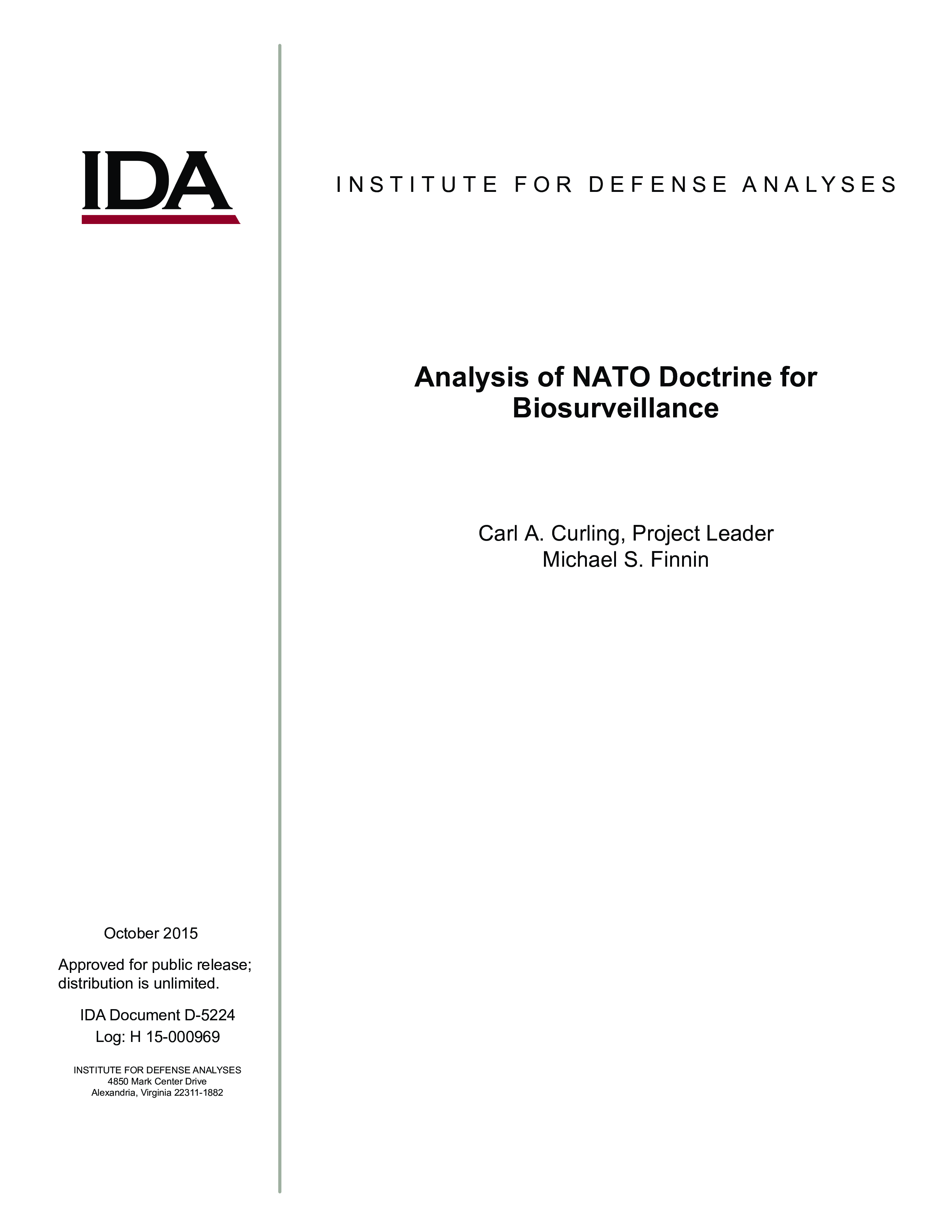The United States is devel
oping an “all-of-Nation” appr
oach to a biosurveillance
enterprise that will allow the US to quickly
detect an incident of
national significance that
affects human, animal, or plant health. The
White House has issued
a “National Strategy
for Biosurveillance” to guide this initia
tive. While no formal all-of-government
biosurveillance implementati
on doctrine exists, the Depa
rtment of Defense (DOD)
already contributes to this
notional enterprise with existing capabilities that are
distributed across the department. The Institute for Defense Analyses (IDA) was asked to
report on the feasibility of the application of NATO doctrine to the development and
implementation of biosurveillance concepts
and doctrine. Additionally, the sponsor asked
whether U.S. biosurveillance practices can co
ntinue to be implemented while engaged in
NATO joint operations. IDA’s initial approach
to answer this question was to gather
DOD and NATO biosurveillance doctrine and co
mpare the two concepts to determine if
NATO policies can be applied to the DOD concept.
An initial search re
vealed that neither
NATO nor DOD had formal doctrine on bi
osurveillance. Therefore, NATO
biosurveillance doctrine could not contribu
te to a developing DOD biosurveillance
doctrine. IDA then proposed to identify and
outline biosurveillance-
like capabilities of
DOD and NATO and compare these activities.
A search of the literature revealed
a study by the RAND Corporation Arroyo
Center
1
which attempted to list the DOD biosurveil
lance-relevant syst
ems and assets, the
policy and doctrine that supported those a
ssets, and the funding
mechanisms for the
assets within the developing DOD biosurve
illance enterprise.
Details of the DOD
biosurveillance capabilities can be found in that document. IDA reasoned that this study
would provide a reasonable assumption of
what the eventual DOD biosurveillance
implementation would be and leveraged the
findings to compare with NATO doctrine.
IDA also referenced appropriate DOD and
NATO doctrine to support the comparison.

